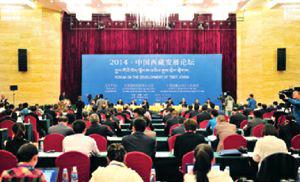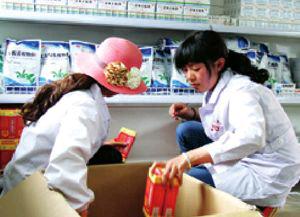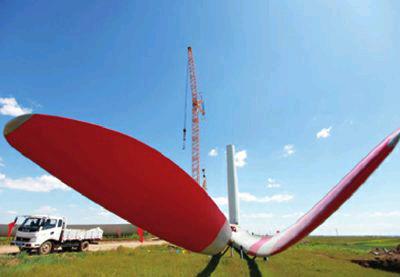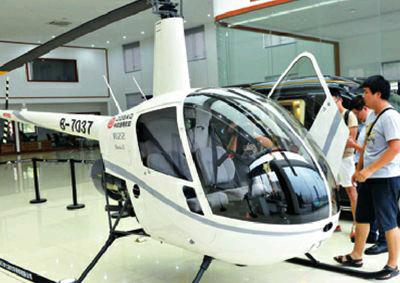Focus on Tibet
2014-09-16
The closing session of the Forum on the Development of Tibet is held in Lhasa, Tibet Autonomous Region, on August 13.
The two-day event is the first international conference themed on the development of Tibet. Around 100 delegates from 33 countries and regions including China, Britain, India and the United States attended.
The Lhasa Consensus released after the closing ceremony highlights key discussion points for a range of issues including religious freedom, sustainable development and environmental conservation in Tibet.
The forum was co-sponsored by the Information Office of Chinas State Council and the regional government of Tibet.
Space Launch
China is preparing for the launch of an experimental recoverable moon orbiter, said the State Administration of Science, Technology and Industry for National Defense on August 10.
The orbiter will be launched before the end of this year from the Xichang Satellite Launch Center in southwest Chinas Sichuan Province, according to a statement from the administration.
The plan is for the orbiter to be launched into lunar orbit and return to Earth at an escape velocity of 11.2 km per second.
The orbiter is one of the test models for Chinas new lunar probe Change-5, which will be tasked with landing on the moon, collecting samples and returning to Earth.
The launch aims to test the tech- nologies that are vital for the success of Change-5, the statement said.
China already launched three unrecoverable lunar probes in 2007, 2010 and 2013 respectively.
Patent Filings
China received 11,243 international patent applications through the Patent Cooperation Treaty in the first half of the year, the State Intellectual Property Office revealed on August 13.
The number represented an increase of 20.5 percent from a year earlier, according to the office.
Chinese companies and individuals made 10,283 filings, accounting for around 91.5 percent of the total applications.
Information technology giants, such as telecommunication device and solution providers Huawei and ZTE, and semiconductor supplier BOE Technology Group Co. Ltd., were most active in filing patent applications, the office reported.
More than half of international patent applications came from south Chinas Guangdong Province in the January-June period.endprint
The Patent Cooperation Treaty provides a unified procedure for filing patent applications to protect inventions in each of its contracting member states.
Anti-Graft Campaign
More than 95 percent of respondents to a survey by China Youth Daily hope Chinese authorities can continue their campaign against corruption, according to results published in the newspaper on August 12.
About 93 percent of the sample of 49,969 people said that they are “paying attention” to the campaign, with 85 percent saying they are “paying close attention.” Only 2.7 percent said they“did not care.”
About 60.5 percent said that the leaderships anti-graft fight has boosted their confidence in Chinas development, with 29.1 percent saying it had not had any boosting effect and 10.1 percent expressing uncertainty.
China has waged an unrelenting battle against corruption after the 18th National Congress of the ruling Communist Party of China (CPC) held in November 2012.
The most recent officials taken down include Zhou Yongkang, a former Standing Committee member of the Political Bureau of the CPC Central Committee, and Xu Caihou, former Vice Chairman of the Central Military Commission. The two have also been the campaigns biggest catch so far.
Better Guarantees
Health authorities announced on August 7 that China will provide all its rural residents with access to medical insurance covering serious diseases in 2015.
By the end of May, the rural residents major-disease insurance program had been piloted in over half of Chinas rural county-level regions, and the government is planning to expand it nationwide next year, said Song Shuli, a spokeswoman for the National Health and Family Planning Commission.
Some 300 million rural residents had joined the major-disease insurance program by the end of 2013 and 1.23 million have received payments under it to date.
Song also said that more than 802 million people, or 90 percent of Chinas rural residents, have joined the basic New Rural Cooperative Medical Program.
Government subsidies for the program increased from the previous 240 yuan ($39) per person each year to 280 yuan ($46) in 2013, she added.
Museum Subsidies
The Chinese Government has allocated 4.96 billion yuan ($806 million) to support free admissions to museums, galleries, memorials and libraries this year.
The funds for 2014 will keep 1,815 museums and memorials, as well as 6,537 galleries, libraries and cultural facilities free, according to the Ministry of Finance on August 11.endprint
The figure is almost the same as 2013, when 5.11 billion yuan ($830 million) was allocated for the same purpose.
Student Nutrition
The Ministry of Finance (MOF) said on August 11 that it has allocated another 16.2 billion yuan ($2.63 billion) in special funds to support a national plan to improve nutrition for rural students this year.
Hospitable Host
A volunteer offers information services to young Lithuanian athletes arriving at the Lukou International Airport in Nanjing, Jiangsu Province, on August 13. The 2014 Youth Olympic Games will be held in Nanjing on August 16-28. This years state subsidies to primary and middle school students, 3.2 percent more than a year ago, will go to schools in 699 impoverished counties in 22 provincial-level areas, mainly in central and west China, according to the MOF.
About 32.29 million rural students have benefited from the 46.23-billionyuan ($7.51 billion) subsidies allocated by the Central Government since 2011, when the nutrition improvement program was launched.
Under the program, which addresses the wealth gap between Chinas rural areas and its cities, each student will receive 3 yuan ($0.49) per day for meals.
However, Chinas cities are also in need of nutritional support. About 12 percent of children aged 7-18 years old in China are overweight or obese, according to a survey by the Chinese Medical Doctor Association in 2012. The obesity problem among adults and children is more pronounced in big cities such as Beijing and Shanghai, where people enjoy higher incomes, eat richer foods and lead more sedentary lifestyles.
Medicine for the Needy
Medical workers arrange pharmaceuticals at a makeshift hospital built in quakeaffected Ludian County, southwest Chinas Yunnan Province. The facility in Longtoushan Town, which was put into service on August 13, can accommodate 50 hospitalized patients and 150 clinic patients.
A 6.5-magnitude earthquake hit Ludian on August 3. The disaster killed more than 600 people and destroyed 80,000 homes in the county and surrounding areas.
As of August 12, Yunnan had received more than 538 million yuan ($87 million) in cash donations and materials worth 162 million yuan ($26 million) for quake relief, the provinces Civil Affairs Department said.
Tempered Inflation
Chinas consumer price index (CPI), a main gauge of inflation, grew 2.3 percent year on year in July, the same pace as a month earlier, data from the National Bureau of Statistics (NBS) showed on August 9.endprint
The growth rate was also the same as that of the first half of this year, showing stable prices in the country.
Chinas producer price index (PPI), which measures inflation at the wholesale level, dropped 0.9 percent year on year in July, according to the NBS.
The PPI has dropped for 29 months in a row, but the pace of decline has narrowed for four consecutive months, down from 2.3 percent in March, 2 percent in April, 1.4 percent in May and 1.1 percent in June.
This narrowing shows that market conditions for industrial products have slightly improved in recent months, said NBS senior statistician Yu Qiumei.
Property Investment
The growth of Chinas real estate investment continued to slow in July, NBS data showed on August 13.
Property investment rose 13.7 percent year on year in the first seven months, 0.4 percentage points down from the first half of the year and 1 percentage point down from the JanuaryMay period.
The investment for residential property, which accounted for 68.2 percent of the total, rose 13.3 percent year on year, compared with a 13.7-percent growth rate for the first six months of 2014.
The slower growth accompanied a faster decline in the area and volume of property sales.
The total area of property sales dropped 7.6 percent year on year in the first seven months, 1.6 percentage points steeper than the decline seen in the first half of the year.
Property sales volume was down by 8.2 percent year on year during this period, compared with a drop of 6.7 percent in the January-June period.
More Companies
China has seen a surge in the registration of new companies in the wake of the country taking steps to streamline the process for starting a business in March, statistics from the State Administration for Industry and Commerce showed.
About 1.6 million new companies have been registered since the registration reform was put into place, rising 64.48 percent from the same period last year.
Registered capital of these new companies totaled 8.22 trillion yuan($1.33 trillion), up 69.09 percent year on year.
China also lifted restrictions on minimum registered capital, payment deadlines, the down payment ratio and the cash ratio of registered capital on March 1, a move aimed at encouraging startups and energizing the economy.
By the end of July, the number of all types of registered market entities in China came in at 64.99 million, with registered capital totaling 116.94 trillion yuan ($19 trillion).endprint
Phase Two
Workers assemble a windmill on the construction site for the second phase of the National Wind and Photovoltaic Energy Storage and Transmission Demonstration Project on August 7.
The second phase of the project will be put into operation at the end of 2014 and can provide 1.25 million kwh of high-quality, stable and green electricity to the power grid.
Insurance Valued
On August 13, the Chinese Government launched measures to boost the insurance industry, pledging to raise premium incomes to 5 percent of the GDP by 2020.
The package, announced on the State Councils website, will allow the insurance industry to play a bigger role in the fledgling social security network.
The second of its kind since 2006, the package could see citizens paying an average of 3,500 yuan ($565) per capita in premiums by 2020.
Commercial insurance companies will become the primary underwriters of individual and household programs and an important supplier of corporate pensions and health insurance.
Insurance will be given a more prominent role in the prevention and relief of disasters and accidents through the introduction of catastrophe insurance products.
Insurance funds will be encouraged to invest in bonds and equities to support major infrastructure projects, urban renewal and urbanization.
The government will encourage the house-for-pension insurance experiment and launch a pilot program to introduce compulsory insurance for environmental pollution, food safety, medical accidents and campus safety.
A Flying Start
Visitors fix their eyes on the R22 single-engined helicopter produced by Robinson Helicopter Co. in an exhibition hall in Hangzhou, east Chinas Zhejiang Province, which is the countrys first helicopter center opened by Zhong-ou Airplane Co. Ltd. on August 11.
Export Rebounds
Chinas exports in July surged 14.5 percent from a year earlier to $212.9 billion, while imports dropped 1.6 percent to $165.6 billion, China Customs data showed on August 8.
Total trade volume in July went up 6.9 percent year on year.
HSBCs chief China economist Qu Hongbin attributed the strong export figures mainly to further recovery in external demand.
Trade surplus expanded to $47.3 billion from $31.6 billion in June.endprint
In the first seven months, total trade volume edged up by 2 percent to $2.4 trillion, with exports up 3 percent to $1.28 trillion and imports up 1 percent to $1.12 trillion.
Total trade surplus in the first seven months surged 20.9 percent to $150.6 billion.
Oil Dependency
Chinas reliance on foreign crude will continue to increase this year despite the ongoing strife in major oilproducing nations like Iraq, an industry report said on August 12.
According to a report published by China National Petroleum Corp.(CNPC), the countrys largest oil and gas producer, China is expected to import 298 million tons of crude this year, accounting for about 58.66 percent of the total crude consumption in the country.
Foreign dependency for the first five months reached 59.87 percent, according to CNPC.
However, some analysts feel that the reliance on overseas crude supplies may be much higher than the levels estimated by CNPC.
Gao Jian, a crude analyst at domestic commodities consultancy Sublime China Information Co. Ltd., said foreign crude may account for about 60 percent of Chinas total crude supplies this year because of the higher imports in the second half.
IPO Preparation
Alibaba Group Holding Ltd. said on August 13 it is selling its small business lending arm to the Small and Micro Financial Services Co., the parent of payment platform Alipay, for $518 million in cash and annual fees for seven years.
This marks the spin-off of Alibabas last remaining financial business ahead of its highly anticipated initial public offering (IPO) in New York later this year.
In an updated prospectus to the U.S. Securities and Exchange Commission, the e-commerce giant said that the move is to avoid same-business competition with the Small and Micro Financial Services Co.
Alibaba said it will focus on Internet business while the Small and Micro Financial Services Co., which also has stakes in a fund management firm and an insurance company, will focus on financial services.
In 2011, Alibaba shed its PayPallike affiliate Alipay to make it a domestic company in order to meet regulatory requirements for thirdparty payment licenses. Alibaba then agreed to use Alipay on preferential terms.endprint
